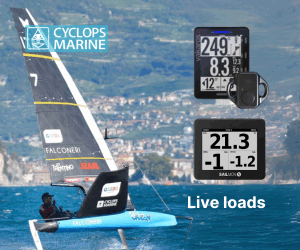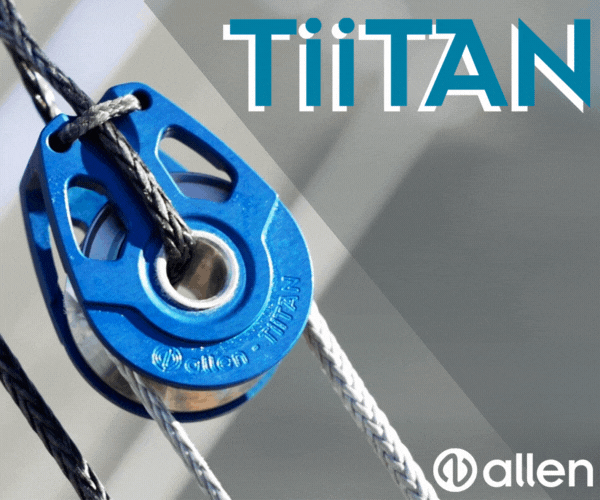
Vendée Globe Day 11: Richomme surges to new 24-hour distance record
by Vendée Globe Media 20 Nov 10:02 PST
20 November 2024


Exactly one week since Nico Lunven (HOLCIM-PRB) set a new solo 24-hour monohull distance record, Paprec Arkéa solo sailor Yoann Richomme significantly surpassed that benchmark this morning during the Vendée Globe, only to find himself slowed down as he and other leaders of the solo non-stop circumnavigation began to struggle in the Doldrums.
The difference was striking. Richomme covered a distance of 551.84 nautical miles in the 24 hours leading up to 0830hrs this morning under near-perfect conditions. Yet just a few short hours later, he was almost at a standstill, bobbing in near-calm winds that had ushered him into the Doldrums.
Efficiency
Demonstrating the speed and efficiency of his latest-generation Finot Conq-Coch design, Richomme’s record sprint occurred with wind speeds of around 17 knots, but as he emerged from a high-pressure ridge of light winds, the seas were notably flat, allowing the two-time solo Transat champion to push hard in relative comfort. He broke Lunven’s record by 5.24 miles (pending ratification by the WSSRC).
Standing on the deck of Paprec Arkéa, shirtless due to the heat and humidity while only making a few knots, Richomme told the Vendée Globe LIVE! English show today with a smile, “It was quite unexpected because the run between the ridge and the ITCZ was pretty short, so I wasn’t even aiming to break the record as I thought it might be less than 500 miles, but apparently it was enough, and my main joy is surpassing Nico Lunven in real life [laughs].
“It’s great, I really pushed myself because I wanted to catch the leaders since I’m quite worried about a potential breakaway near Brazil, thinking I could cover some miles today, and it worked out. However, it’s not paying off too much right now as I’m stuck in a light spot, moving three or four knots for the last three hours. Ideally, if there were a hundred miles of breeze, I could’ve covered many more miles.”
How long will it hold?
When asked how long he believed his record would remain untouchable, he replied, “If we enter a warm front before a cold front on a flat sea, I think the crewed record is achievable because a few miles of difference doesn’t matter much between solo and crewed. We could get much closer to the crewed record, but the right conditions are necessary, so let’s see what happens. I feel most of these boats can reach these speeds now.”
While speaking during the show, Richomme was still closely tracking his long-time rival Charlie Dalin (MACIF Santé Prevoyance), both caught in the same calm. When asked how much longer he expected to be slowed down, he joked, “I’m not really sure, but as long as it’s before Charlie Dalin, I’m okay with it!”
Goodchild still leads the pack, but just barely
Britain’s leader Sam Goodchild (VULNERABLE) was the first to experience slowed conditions around 0500hrs UTC, gradually being caught by his nearest rivals. Sébastien Simon (Groupe Dubreuil) trailed just three or four miles behind Goodchild, while third-placed Lunven was 25 miles back but moving at just 3 knots. Logically, those who arrive first should be the first to exit, with minimal lateral separation among the leaders. Routing suggests they might have no more than 20 hours before they move into the SE’ly Trade Winds, which should be around 15 knots.
In the meantime, cumulonimbus clouds, violent squalls, and heavy rain may mix with light, variable winds. This phase promises to be equally exhausting mentally and physically.
“In the Doldrums, sailors must manipulate between sudden, sometimes harsh squalls and gentle ones. This demands constant sail changes and vigilance for the slightest wind shift,” explains Jacques Caraës, one of the Assistant Race Directors, who understands from experience how chaotic and frustrating the zone can become.
Rare conditions
However, the South Atlantic is teeming with potential. “It’s almost too good to be true!” remarked Germany’s Boris Herrmann (Malizia-Seaexplorer) in a brief call this morning. A favorable direct SE’ly course looks likely due to the South Atlantic high being significantly displaced east and a front developing, which should propel the lead group into the Southern Oceans at high speeds.
“It’s a rare scenario that would likely be considered ideal for record-seeking large multihulls,” enthused Caraës, who broke the Trophée Jules Verne record aboard the maxi tri Orange. If these expected conditions materialize, Richomme’s 24-hour record might be short-lived!
Find out more…

